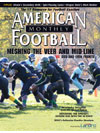AMERICAN FOOTBALL MONTHLY THE #1 RESOURCE FOR FOOTBALL COACHES
Article CategoriesAFM Magazine
|
AFM Subscribers Ask...with Mark Bankerby: Mark Banker© More from this issue Last fall Oregon State finished first among all 119 Football Bowl Subdivision teams in rushing defense, surrendering only 70.6 yards per game. The Beavers also finished fourth in quarterback sacks (3.4 per game); sixth in tackles-for-loss (8.2); and eighth in total defense (306.2 ypg). In 2006 the OSU defense led the nation in tackles-for-loss yardage (528). The lynchpin of this defense is Mark Banker, Oregon State’s Defensive Coordinator. Banker has spent 12 of the last 13 seasons with Head Coach Mike Riley, both at OSU and with the San Diego Chargers. He began his coaching career with his alma mater, Springfield College, and has also coached at Cal State Northridge, Hawaii, USC and Stanford. A defensive specialist, he answers your questions… What special preparation do you make for the quarterback in the shotgun zon....The full article can only be seen by subscribers. Subscribe today!
|
|
|||||||
| HOME |
MAGAZINE |
SUBSCRIBE | ONLINE COLUMNISTS | COACHING VIDEOS |
Copyright 2025, AmericanFootballMonthly.com
All Rights Reserved





